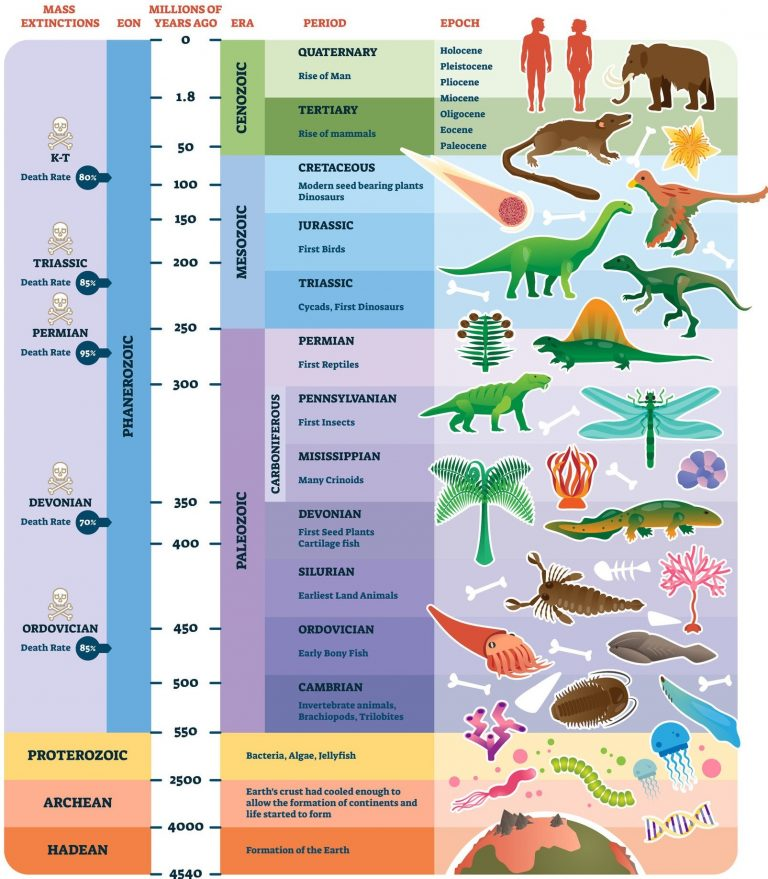Biodiversity & Environment
Unveiling California's Past Extinction to Illuminate Modern Challenges
- 22 Aug 2023
- 7 min read
For Prelims: Forestfires, Pleistocene Epoch, La Brea Tar Pits , Holocene Epoch, Geological Time Scale, Mammoths, Giant bears, Dire wolves, Camels.
For Mains: Priorities to Prevent Future Mass Extinctions
Why in News?
As the prevalence of deadly wildfires has surged, driven by the combined forces of human-caused climate change and disruptive land management practices, a new study delves into California's history during the Pleistocene epoch, a time marked by profound climatic shifts and Earth's largest extinction event in over 60 million years.
What is the Pleistocene Epoch?
- It is the geological epoch that lasted from about 2,580,000 to 11,700 years ago, spanning the earth's most recent period of repeated glaciations.
- It was during the Pleistocene that the most recent episodes of global cooling, or ice ages, took place.
- The epoch featured ice age giants, such as woolly mammoths (Mammuthus primigenius) giant bears, dire wolves and camels, many of which disappeared at the end of the Pleistocene in a major extinction event.
- The extinction resulted in substantial losses, North America lost over 70% of mammals weighing more than 97 pounds, South America lost over 80%, and Australia nearly 90%.
- The end of the Pleistocene epoch also marks the beginning of the Holocene epoch, which is the current epoch we are living in.
What are the Major Highlights of the Study?
- Revealing Insights from the La Brea Tar Pits: La Brea Tar Pits is a prolific ice age fossil site in Los Angeles,US home to preserved remains of thousands of large mammals trapped in asphalt seeps.
- By analyzing proteins in the fossils, the study reveals a deadly combination of a warming climate marked by prolonged droughts and rapid human population growth.
- These factors pushed Southern California's ecosystem to a tipping point, causing irreversible changes in vegetation and mega-mammal populations.
- As California warmed coming out of the last ice age, the landscape became drier and forests receded.
- At La Brea, herbivore populations also declined, probably from a combination of human hunting and habitat loss. Species associated with trees, like camels, disappeared entirely.
- By analyzing proteins in the fossils, the study reveals a deadly combination of a warming climate marked by prolonged droughts and rapid human population growth.
- A New Paradigm: Fire's Role: The study highlights that fire is a relatively recent phenomenon in Southern California, with fire becoming frequent only after human arrival.
- Over 90% of wildfires in coastal California are ignited by human activities such as downed power lines and campfires.
- Parallels between Pleistocene extinctions and contemporary crises underscore the vulnerability of ecosystems under compounded stress.
- Relevance for Today's Climate and Biodiversity Crisis: Today's convergence of climate warming, human population expansion, biodiversity loss, and human-triggered fires mirrors the past.
- The pace of current temperature rise, primarily fueled by fossil fuel burning, far surpasses that of the ice age's end.
- The study underscores the need to intensify efforts to curtail greenhouse gas emissions, prevent reckless fire ignitions, and safeguard megafauna.
What is the Geological Time Scale?
- The Geological Time Scale is like a vast timeline that helps us understand the history of our planet.
- Just as a calendar breaks down years, months, and days, the Geological Time Scale breaks down Earth's history into eons, eras, periods, and epochs.
- Eons are divided into Eras, Eras into Periods, Periods into Epochs, and Epochs into Ages.
What Should be the Priorities to Prevent Future Mass Extinctions?
- Holistic Ecosystem Restoration and Preservation:
- Innovative Ecosystem Mapping: Develop advanced mapping technologies to assess ecosystem health and identify critical areas for restoration.
- Bio-corridor Creation: Establish ecological corridors to connect fragmented habitats, enabling species to migrate and thrive across diverse environments.
- Preemptive Conservation: Prioritize conservation of keystone species to maintain the ecological balance crucial for long-term ecosystem resilience.
- Synthetic Biology for Species Resilience:
- Genetic Augmentation: Employ synthetic biology techniques to enhance genetic diversity within vulnerable species, bolstering their adaptability to changing conditions.
- Assisted Evolution: Proactively guide species adaptation through controlled interventions, accelerating their response to environmental shifts.
- Ethical Considerations: Forge a global ethical framework to guide the responsible use of synthetic biology in conservation efforts.
- Green Innovation for Sustainable Resource Utilization:
- Circular Economies: Promote circular economies to minimize resource depletion and waste, thereby reducing stress on ecosystems.
- Biomimicry and Sustainable Design: Harness nature-inspired designs to develop eco-friendly products, reducing environmental impacts across industries.
- Green Infrastructure: Invest in sustainable infrastructure that reduces habitat destruction, such as wildlife-friendly roadways and energy installations.
- Data-Driven Conservation Management
- Predictive Analytics: Utilize machine learning and AI to model ecosystem dynamics, enabling timely interventions to prevent disruptions.
- Real-time Monitoring: Implement remote sensors and satellite technology for real-time monitoring of ecosystems and early detection of stressors.
- There is a need to establish interconnected data-sharing networks to facilitate collaborative conservation efforts across borders.
- Youth and Community Empowerment:
- Environmental Education Reform: Revamp educational curricula to foster a deep understanding of biodiversity's importance and instill a sense of stewardship from an early age.
- Youth-Driven Initiatives: Encourage youth-led conservation projects and platforms to amplify their influence and involvement in shaping policies.
- Cultural Integration: Integrate indigenous and local knowledge systems into conservation strategies, promoting community ownership and sustainable practices.







